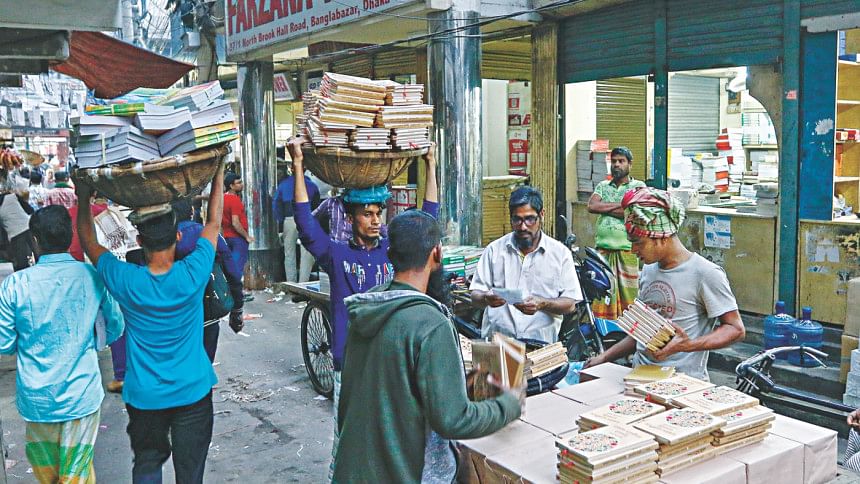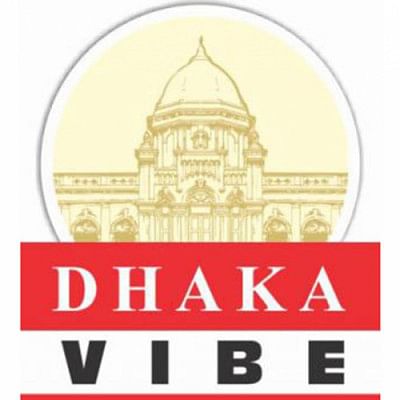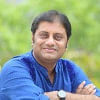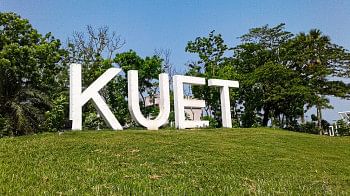The bustle at Banglabazar


Books, lots of them. On the shelves, on the floor -- every inch of a publisher’s office is taken up by new books, while some more spill over to the warehouse.
The musky smell of new books fill the air in Banglabazar. They are coming in on pick-ups, they are coming in on baskets. Alleyways are packed by rickshaw-vans carrying bookloads. This is what the oldest book market of the country looks like around this time every year.
With less than two weeks to go till the Amar Ekushey Book Fair begins, publishers are ready to take on the monthlong fair; their days are demanding, nights are outright hectic.
Farid Ahmed, President of Academic and Creative Publishers Association of Bangladesh (ACPAB), told The Daily Star, “We’re fully prepared for the book fair. Like publishers, printing presses are busy too. Most of our new books arrive by the first week of the fair. We’re passing really busy days right now.”
Monirul Hoque, Executive Director of ACPAB, said, “We actually prepare for the fair throughout the year, but our schedules tighten right before the start of the fair.”
THE ECOSYSTEM
Every year in January, Banglabazar’s business multiples. It has around 400 creative publishers, and everyone becomes frantic over the book fair.
Along with publishers, anyone who is someone in Banglabazar is busy this month. Even day labourers are high in demand, said Hasan Zaydi, publisher of Pearl Publications.
The business spreads out to printing presses around the area. Every printer is occupied with book fair orders -- printing goes on night and day. It’s no different for the 100 binding houses in the area as well. Binders start charging more around this time, a publisher told The Daily Star.
Cover artists are in high demand too. Illustrators, painters, and graphic artists of all ages have their hands full.
Besides the 400 creative publishers are the academic publishers. All in all, there are about 2,000 bookstores. If one counts the salespersons, print workers, binders, and other staff, the print industry of Banglabazar provides for more than 1 lakh people.

THE BOOK FAIR IN NUMBERS
“There will be 34 pavilions at the fair this year. Besides the pavilions, 322 publishers are also taking part in the fair,” Farid Ahmed of ACPAB added.
Every year there are 3000 to 3500 new books printed for the book fair. Besides new books, beloved and acclaimed old titles get republished too. Some new books get to their second and third editions as the fair goes on.
The number of books published by each publisher varies greatly. Some are set to publish 100 new titles, some 50, and others 40. In the crowd of big-time publishers, smaller publishers aren’t shying away from competition, and are busy printing their own books.
Among republished books, Humayun Ahmed titles lead the field. The much-loved author’s books still make it to the top-seller’s lists, especially his Himu and Misir Ali series, which still sell in large numbers to this generation’s readers. Given the numbers, it’s no wonder that publishers keep reprinting them after all these years.
To mark the Mujib Barsho (Mujib Year), the centenary of Banglabandhu Sheikh Mujibur Rahman, a record number of books are being published on him this year. A publisher said more than 200 books focusing on Bangabandhu will be published. Most of them are ready after printing and binding.
BANGLABAZAR THROUGH THE DECADES
It’s the oldest book market of the country. For many, it’s the homestead of books.
But long before books, Banglabazar used to be the center for business in pre-Mughal Dhaka. Later on, commerce in the city moved westwards, finding Chawkbazar as the new business hub. But Banglabazar was too stubborn to relinquish its supremacy. From commerce, it became the top name for the publishing business.
This new Banglabazar started its journey in the 50’s on the shores of Buriganga. Back then, the demand for academic books were greater than for creative books.
Before partition, Kolkata used to be the publishing hub of this region. In those days, a few publishers from East Bengal imported creative books from Kolkata and sold them locally. This started with the publishing company Mollik Brothers.
The pioneers of publishing business in the country are: Nawroz Kitabistan, Student Library, Great East Library, Al-Hamra Kitab Mahal, Malik Library, Khoshroj Kitab Mahal, Hardson and Co., Puthipatra. These companies started their business right after partition, and Banglabazar grew up around them.
In those days, some authors were publishers too. For example, the proprietor of Nawroz Kitabistan was children’s book writer Mohammad Nasir Ali.
A senior publisher told The Daily Star, “In the 60’s and 70’s, most of the publishers’ offices were on the ground floor. Most of these offices were tin-sheds. The industry has come a long way from there. Today, books from Banglabazar are making their way to Bengali-speaking foreign nationals across the world.”
The 80’s is known as the golden age for Banglabazar publishers. This is the time when the publishing business started turning heads. Publishers of this particular era are the ones who made the industry into what it is today. Some of them are: Somoy Prokashon, Anannya Prokashoni, Agamee Prakashani, Bidya Prokash, Afsar Brothers, Anupom, and more. Some of the big names of the industry got their starts in this decade.
These publishers started publishing books by famed poets and authors of the country. Humayun Ahmed’s journey as a wordsmith began during this decade. Khan Brothers published the writer’s first four books.
WHERE THE NAME CAME FROM
Where did Banglabazar get its name? Evidence suggests that the area existed even before the Mughal period. Some tourists of the period mentioned Banglabazar as “Bengala Nagar”. Some argue Banglabazar’s name might have evolved from that.
Others argue along common sense. The area used to be a place for Bengalis, who later went onto establish a market here, and so, logically, it started to be called Banglabazar.

 For all latest news, follow The Daily Star's Google News channel.
For all latest news, follow The Daily Star's Google News channel. 



Comments